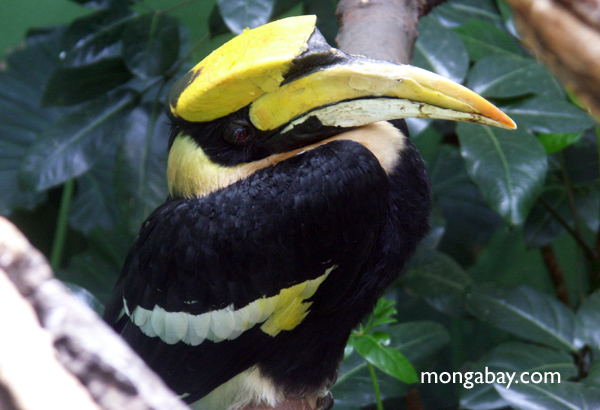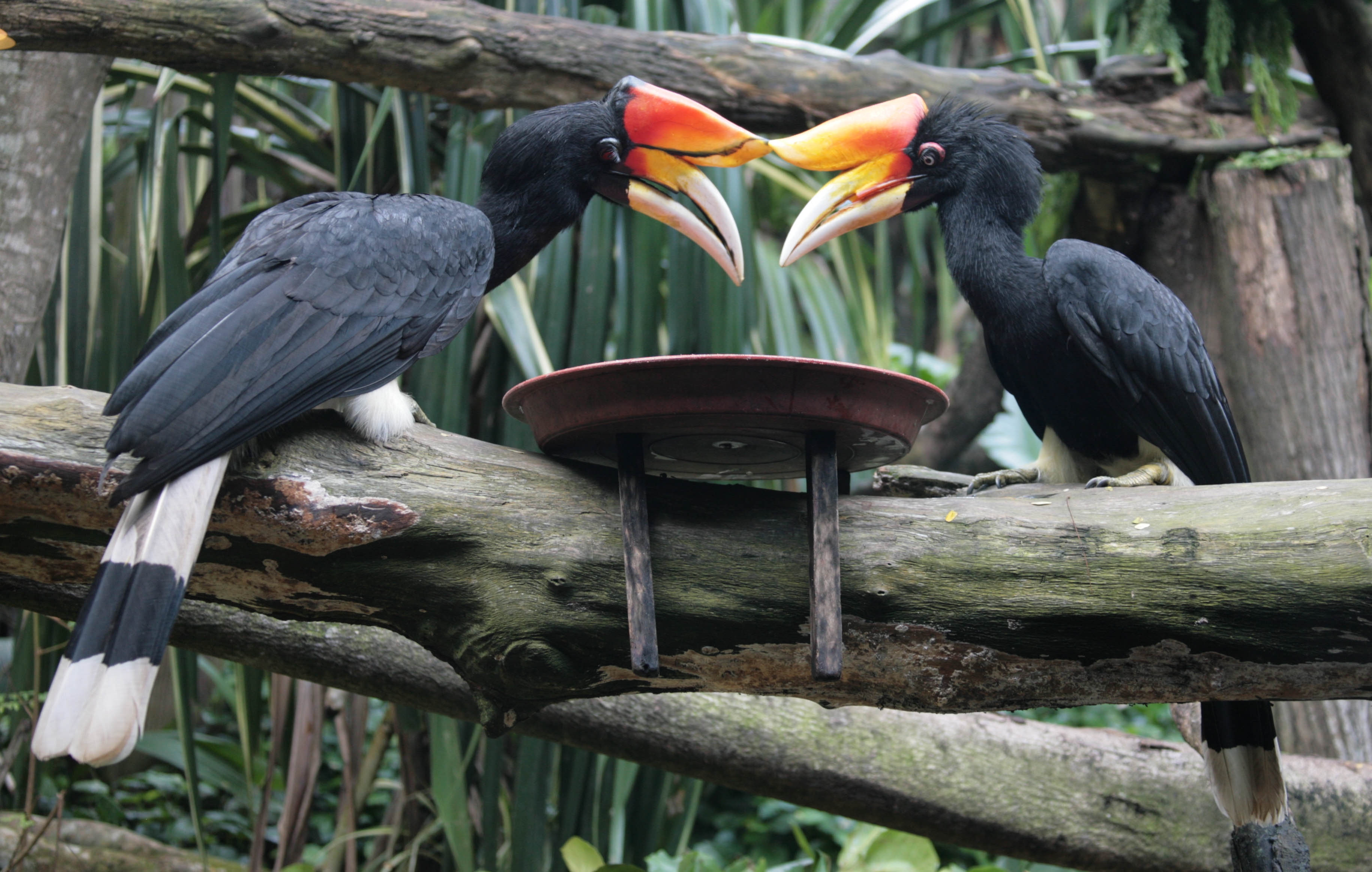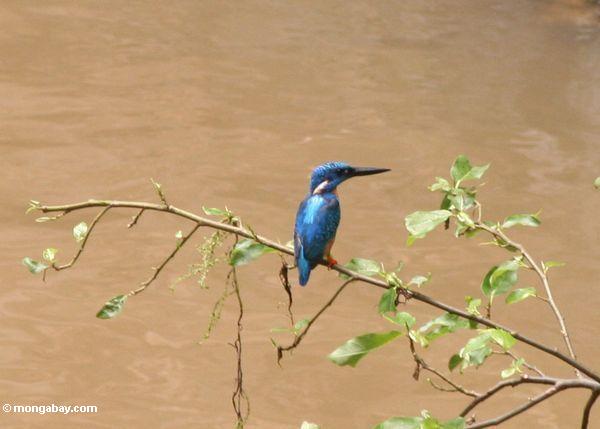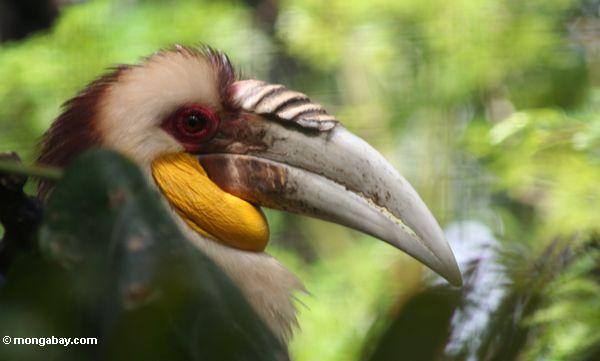Wikipedia
mongabay.com
Birds of the Tropical Rainforest

Wednesday, October 20, 2010
Cassowary
The Cassowary is voted one of the most dangerous birds on the planet, by the Guinness world records. This bird is very high on the endangered species list, due to the shrinking of their habitat (rainforest). these birds have been around for a very long time. The Cassowary is a large flightless bird. The Cassowary can be from 5 to 6 feet tall. The females are lager than the males, and have more colour. The birds body is covered in black feathers while its neck and head are a purple, blue colour. The Cassowary has a casque on its head which is a helmet like structure. The Cassowary can live up to 60 years of age. The Cassowary mainly eat fruit and fungi, but will also eat frogs, snakes, snails, worms, insects, dead rats and birds.
Jungle Myna
The Jungle Myna is found in Asia, Bangladesh, Pakistan, India, and Burma. The Myna makes 3-4 eggs a year. This bird has black plumage on the head and back and white plumage on the stomach and tips or the tail and underwing. The beak and legs, are a yellowy orange. Younger birds tend to have a browner tinge in the plumage then the adults. This bird eats insects fruits and seeds. some of these birds have actually been kept as pets.
Andean Cock-of-the-rock
The Andean Cock-of-the-rock is the Official bird of Peru. The male has disk like shape on his head as well as the plumage that he has is orange. The female however is quite a bit more browner than the male. The male has a yellowish beak where as the female has a black beak with a yellow tip. The Andean has a black tail, and wings, and is a medium sized bird. The female takes care of the young all by herself after mating she makes a nest under a rock overhang, and cares for them until they hatch. There are many different eye colours in the species varying from red, to orange to white, to yellow, to brown. The Andean is located throughout Venezuela, Columbia, Peru, and Bolivia. The Andean likes to stay in lower forest levels where there are fruit bearing trees. They mainly eat fruits, and insects, but frogs and lizards have been seens as another food source.
Rhinoceros Hornbill
The Rhinoceros Hornbill is one of the biggest of the hornbills. Hornbills can live in captivity for up to 35 years. Females have whitish eyes, while the males have orangey-reddish eyes. The Hornbills beak is mainly red while its casque is reddish yellow ( a casque is a helmet like part or process ). The Rhinoceros Hornbill lives in Malay Peninsula, Singapore,Sumatra, Java, and Borneo. These particular hornbills lay their eggs in hollow trees, but the female must first be able to trust her partner before doing so. The male is responsible for bringing the young and the female food while they are in the hollow tree. The rhinoceros hornbill eats fruit, insects, small reptiles, rodents and small birds.
Tuesday, October 19, 2010
Great Hornbill
The Great Hornbill is found in the tropical forests of Asia. Its well known for its horn, although its not a horn, rather a colored, horny growth known as a casque. It is a large bird, 95-120 cm long, with a 152 cm wingspan and a weight of 2.15–4 kg. Its appearance is black and white, while its head is yellow and white, with its beak being orange and yellow on top, white on the bottom. Its diet is fruit, figs, insects, nestling birds, and small lizards. It can live a very long life in captivity, almost up to 50 years.


Blue-eared Kingfisher
The blue eared kingfisher is found in tropical forests in south east Asia. Its appearance is a mixture of blues, both dark and light, with richer rufous under parts and has a long small beak. Its main diet is small fish, berries and nuts. Its length is about 16cm, and its long beak is best suited for catching small fish. It is unknown what their population is, it is said that it is estimated to be volunerable to extinction.
Yellow Crested Cockatoo
The Yellow-crested Cockatoo is found in wooded areas of East Timor and Indonesia's islands of Sulawesi and the Lesser Sundas. It is medium in size, approximately 35 cm in length and its diet consists of seeds, buds, fruits, nuts and herbaceous plants. These birds nests in tree cavities and the eggs incubation is shared by both parents, there are often two eggs in a nest, the eggs hatch after 28 days, then they leave the nest after 75 days. Their beaks are round and hard, probably used to crush small hard nuts or insects.


Monday, October 18, 2010
Rainbow Lorikeet
The rainbow lorikeet is a species of parrot found in Australia, eastern Indonesia , Papua New Guinea, New Caledonia, Solomon Islands and Vanuatu. Its habitat is rainforest, coastal bush and woodland areas, and its diet consists of fruit, pollen and nectar, and has a tongue adapted especially for their specific tastes. Their sizes are about medium, being only 25–30 cm, and wingspan of 17 cm. The appearance is true to its name, having a vast amount of colors, having a blue face, their crest being a mixture of reds and yellows, below the crest is another shade of blue, and their wings having different shades of colors being mostly green. Their beaks are small and round, and having a tongue that can get the nectar out of the fruit.


Wreathed Hornbill
The Wreathed Hornbill (Aceros undulatus) is found in East India to Southwest China, Southeast Asia, Java and Bali. Its main diet is fruit, insects and nuts, and It is 75–100 cm long. Males can weigh at about 1.8 k, or 3.65 kg, and females can weigh about 1.36 kg to, 2.7 kg.They have very long, beaks, also having a large width as well. So its most likely used to open much harder or larger nuts and fruits.
Thursday, October 14, 2010
Tropical Rainforest
http://www.blueplanetbiomes.org/rainforest.htm
The tropical rainforest consists of tall trees, only about 10-20% of the light ever hits the ground. The Tropical Rainforest biome has no seasons, and keeps warmth to it all year around. There is more than 50% of the worlds species living in this biome alone, including plant life. Very little sunlight reaches the ground resulting in stunted plant life, for example small shrubs, lichens, mosses, etc. It rains very often in the rainforest, resulting, in high humidity year round.
The tropical rainforest consists of tall trees, only about 10-20% of the light ever hits the ground. The Tropical Rainforest biome has no seasons, and keeps warmth to it all year around. There is more than 50% of the worlds species living in this biome alone, including plant life. Very little sunlight reaches the ground resulting in stunted plant life, for example small shrubs, lichens, mosses, etc. It rains very often in the rainforest, resulting, in high humidity year round.
Scarlet Macaw
The Scarlet Macaw Lives in Evergreen forests in the American Tropics. The average weight is 1 kg. The Macaw can live up to 40-50 years and up to 70 in captivity. It can lay 2-3 eggs a year. The Scarlet Macaw is about 32 inches long including their tail plumage which is mostly crimson, while their rump and tail feathers are mostly blue, and their shoulder is red, middle or their wing is yellow, and tips of wings are blue, underside the wings are red, and a yellowy gold colour. The young have dark eyes,and adults have yellow eyes. The Scarlet Macaw makes low pitched calls and screams so they can call for their groups from miles away. They eat fruit, seeds, and large hard seeds.
Blue and Yellow Macaw
The Blue and yellow macaw is usually found in the forests of South America, Trinidad, and in the south of Brazil. It has become an endangered species in Trinidad, but is common in its natural habitat. Their wing span is about 76-86 cm, and in colour the wings and tail are a light blue, they have a dark blue chin, and the belly appears gold, and the forehead is green. Some birds can appear more orangey, and was often seen on Trinidad birds. Their beaks are black, and they use them to crack nuts and eat fruits. Their diets consist of nuts, fruits, and insects. The mating seasons is usually in the beginning of spring, and when they mate, they mate for life. They nest in tree holes and the female lays two to three eggs and incubates for about 28 days. The chicks hatch and stay with their mother for 90 days, and then fledge.
Wednesday, October 13, 2010
Toucans
Toucans are colourful birds from their body to their large beaks. Toucans come from a family of around 40 species. Their name comes from Portuguese which is Tupi tucana. Toucans have short compact bodies, that are similar to a crows. The toucans tail is rounded, and has many different lengths depending on which bird. The toucan has a short stubby neck, and have short wings because they don't need to fly long distances. Toucans have strong short legs, and bills of a female toucan are usually more blocky, and straight. Even though the size of the toucans bill is sometimes big, it is light. A toucans tongue can be up to 6 inches long, it is grey and narrow. A toucan maily Lay 2-4 eggs each year. They will make nests inside hollow trees, and the young are born nakes with no feathers or down. Toucans are permanent residents, meaning they don't migrate, and usually are found in pairs or 'flocks'. The toucan mainly eats fruit, but sometimes eat insects and small lizards as well as they will eat eggs in smaller birds nests and nestlings. Toucans tip their head back to allow the fruit to role into their mouths before swallowing
Tuesday, October 12, 2010
6 birds I'm going to do site links
References:
http://en.wikipedia.org/wiki/Rhinoceros_Hornbill
http://en.wikipedia.org/wiki/Jungle_Myna
http://en.wikipedia.org/wiki/Andean_Cock-of-the-rock
http://www.buzzle.com/editorials/7-18-2006-102736.asp
http://en.wikipedia.org/wiki/Scarlet_Macaw
http://en.wikipedia.org/wiki/Toucan
http://en.wikipedia.org/wiki/Rhinoceros_Hornbill
http://en.wikipedia.org/wiki/Jungle_Myna
http://en.wikipedia.org/wiki/Andean_Cock-of-the-rock
http://www.buzzle.com/editorials/7-18-2006-102736.asp
http://en.wikipedia.org/wiki/Scarlet_Macaw
http://en.wikipedia.org/wiki/Toucan
Subscribe to:
Comments (Atom)


_-San_Diego_Zoo-8a.jpg)




